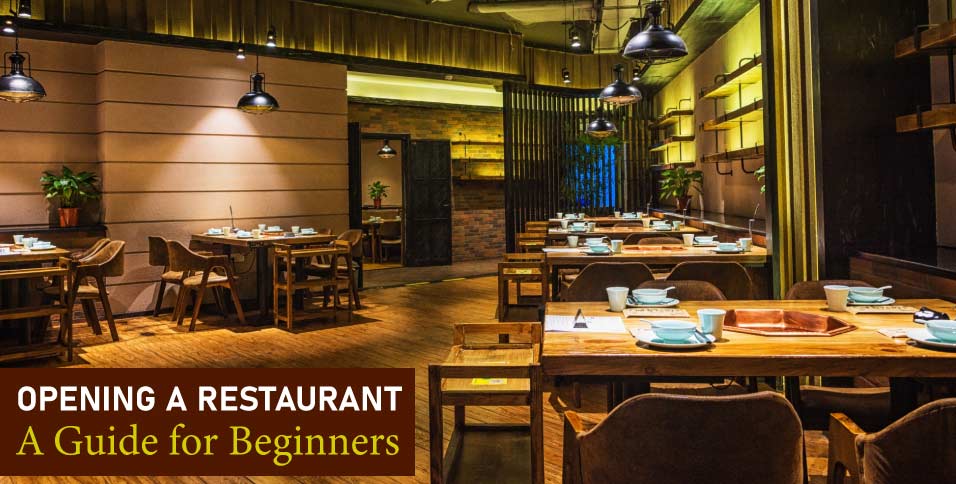Delving into the restaurant business can be exhilarating, blending passion with entrepreneurship. From concept to cuisine, the journey of opening a dining establishment is filled with significant decisions and meticulous planning. As you embark on this gastronomic adventure, understanding each step toward creating a successful restaurant is crucial. Below, we explore fundamental aspects that will help you transform a zest for food into a thriving business.
Understanding the Financials: Budgeting and Startup Costs for New Restaurateurs

Launching a restaurant requires a well-planned financial strategy to cover startup costs and maintain operational stability. The initial investment typically includes leasing or purchasing property, obtaining licenses and permits, and outfitting your space with proper commercial restaurant equipment by Kitchenall. Be realistic in your projections and prepare for unexpected expenses that inevitably arise during the opening phase.
One key element in your financial plan should be finding reliable suppliers. It’s essential to establish relationships with trustworthy vendors, such as a restaurant supply company, to procure quality equipment and ingredients at favorable terms. Regularly comparing prices and services across suppliers can lead to significant cost savings over time.
External funding can also play a pivotal role. Consider all available financing options, such as small business loans, investments from family and friends, or engaging partner investors. These funds can help cushion the initial financial burden while positioning you for a solid start.
Constructing a detailed budget will guide you through the financial labyrinth of opening a restaurant. Allocate funds for marketing, staffing, and inventory, and reserve a cushion for unforeseen expenses. Prudent financial planning is a roadmap to minimize risks and safeguard your business from infancy and beyond.
Choosing the Right Location: A Critical Decision for Restaurant Visibility and Success
The choice of location can make or break your restaurant. Visibility, accessibility, and the surrounding environment are factors that heavily influence customer patronage. Researching traffic patterns and understanding the dynamics of potential neighborhoods can offer insights into the best spots for attracting diners.
Competition analysis is pivotal when evaluating locations. Establishing your restaurant in an area with similar dining establishments can be beneficial if your concept offers a novel twist. However, too many competitors could limit your business’s potential to capture a sufficient share of the market.
Consider the logistical aspects of your chosen location as well. Parking availability, delivery options, and zoning laws play a substantial part in your operational efficiency. A location that easily accommodates supplies and staff can contribute to a smooth-running establishment.
Designing a Menu That Satisfies: Balancing Creativity With Customer Demand

The heart of any restaurant is its menu, a direct reflection of your concept and creativity. It’s the tangible product you offer and should align with your brand’s narrative while also tantalizing the taste buds. A well-designed menu balances innovative dishes with crowd-pleasers, ensuring a wide-ranging appeal.
Ingredient sourcing is as important as the dishes themselves. Establishing connections with local suppliers and farmers can assure quality and freshness and possibly even inspire seasonal offerings. Incorporating EP Henry Hardscape pavers & walls into your outdoor dining area can also enhance the ambiance and attract customers seeking an elevated outdoor experience.
While creativity in your menu is valued, practicality should not be overlooked. Consider the ease of preparation and the cost of ingredients in menu planning to manage food costs effectively. This careful attention to detail can improve profitability without compromising the quality of the food served.
Dietary trends and restrictions are increasingly important to modern diners. Offering vegetarian, vegan, or gluten-free options can expand your customer base and meet the growing demand for inclusive dining experiences. Regularly revisiting and updating your menu keeps it fresh and gives patrons a reason to return.
Launching a successful restaurant is a multifaceted endeavor that demands thorough research, precise planning, and a perpetual passion for the craft of hospitality. It involves a deep understanding of the market, meticulous financial preparation, strategic location selection, menu ingenuity, and contemporary marketing savvy. Embrace these guiding principles, and you’ll be primed to create a culinary haven that stands the test of time.
Also Read: Thinking about opening a restaurant? Read these tips first















